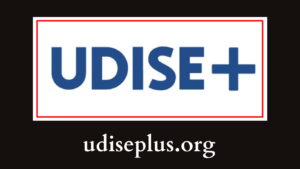The Unified District Information System for Education Plus (UDISE Plus) and SDMS (School Data Management System) play a pivotal role in the Indian education system. Together, they offer a cohesive framework that streamlines the collection, management, and analysis of educational data across the country. This article delves into every aspect of UDISE Plus SDMS, highlighting its features, benefits, challenges, and long-term prospects for improving educational outcomes.
As education increasingly moves into the digital era, real-time and accurate data have become indispensable in shaping policies and monitoring progress. UDISE Plus SDMS stands as a transformative tool in this regard, ensuring that critical educational data from schools, districts, and states are centralized and efficiently managed.
Table of Contents
ToggleThe Importance of Data in Education
In a country as diverse as India, with over 1.5 million schools and approximately 250 million students, accurate and timely data is the backbone of any reform or policy implementation. Before digital data management systems, the collection and analysis of educational data were slow and inefficient. This resulted in delays in identifying areas that required intervention and addressing discrepancies in resource allocation.
What is UDISE Plus SDMS?
UDISE Plus SDMS is a web-based comprehensive educational management information system designed to capture real-time data from schools across India. Launched by the Ministry of Education (MoE), this system provides a unified platform for managing data related to school infrastructure, student enrollment, teacher availability, performance metrics, and various other parameters crucial to monitoring and improving educational quality.
The original UDISE (Unified District Information System for Education) was launched in 2012 as a paper-based system aimed at tracking school-related data. While it served its purpose, the growing demand for real-time and accurate information led to the development of the UDISE Plus system, an upgraded digital platform that integrates seamlessly with the School Data Management System (SDMS).
The Evolution from UDISE to UDISE Plus SDMS
The journey from UDISE to UDISE Plus SDMS reflects the broader trend toward digitization in public administration. The evolution aimed to address the limitations of the old system, particularly its reliance on manual data entry, lack of real-time updates, and challenges in data validation. As the education sector expanded and became more complex, the need for a more sophisticated platform became clear.
UDISE Plus SDMS offers several advantages over its predecessor:
- Real-time data entry and updates: Schools can now submit data instantly, reducing the chances of outdated or erroneous information.
- Data accuracy: With built-in validation features, UDISE Plus SDMS ensures that data is accurate and consistent across the board.
- Enhanced accessibility: Schools, districts, and state-level authorities can access the platform from any location via the Internet, improving collaboration and data sharing.
Key Features of UDISE Plus SDMS
1. Centralized Data Collection and Storage
One of the most significant features of UDISE Plus SDMS is its centralized nature. Data from over 1.5 million schools across the country is collected and stored in a single, unified system. This allows the Ministry of Education and other stakeholders to monitor the progress of schools in real time and to identify trends that require attention.
By centralizing data, UDISE Plus SDMS eliminates the need for multiple databases and paper records, which were prone to errors and delays in reporting. This has led to a more streamlined approach to data management and analysis.
2. Comprehensive School Data Management
The SDMS (School Data Management System) aspect of UDISE Plus is designed to handle a broad range of data types. It collects detailed information about:
- Student Enrollment: Schools report on the number of students, gender ratios, and attendance rates.
- Teacher Availability: Data on teacher qualifications, recruitment, training, and deployment are monitored to ensure that schools are adequately staffed.
- School Infrastructure: The system tracks the availability and condition of essential infrastructure, such as classrooms, toilets, libraries, and computer labs.
- Student Performance: Academic outcomes, including exam results and student progression, are captured to assess the effectiveness of teaching methods and curricula.
3. Real-Time Data Entry and Validation
Unlike the previous UDISE system, where data collection was a time-consuming, once-a-year process, UDISE Plus SDMS allows for real-time data entry. Schools can update their data throughout the academic year, ensuring that the information provided is up-to-date.
Moreover, the platform incorporates sophisticated data validation tools that cross-check entries for errors or inconsistencies. This reduces the risk of inaccuracies, which can skew data analysis and policy decisions.
4. User-Friendly Interface
A significant improvement in UDISE Plus SDMS is its user interface, which is designed to be intuitive and easy to navigate. School administrators, teachers, and education officials can input data, run reports, and access essential features with ease. This minimizes the learning curve and ensures that the platform can be used effectively even by those with limited technical expertise.
5. Powerful Reporting and Analytics Tools
The platform’s reporting and analytics tools are highly advanced, offering stakeholders the ability to generate custom reports based on specific criteria. These reports can be used to track everything from student performance to infrastructure needs, providing invaluable insights for policy planning and resource allocation.
The analytics tools enable education officials to drill down into data sets, identifying trends and patterns that might not be immediately obvious. This makes it easier to detect gaps in education delivery and take corrective action.
How UDISE Plus SDMS Supports Education Policies
The data generated by UDISE Plus SDMS plays a crucial role in supporting national education policies, particularly the National Education Policy (NEP) 2020. The NEP 2020 emphasizes data-driven decision-making, and UDISE Plus SDMS provides the foundation for this.
1. Inclusive Education
One of the primary goals of the NEP 2020 is to promote inclusive education, ensuring that every child, regardless of background, has access to quality schooling. UDISE Plus SDMS helps in tracking enrollment data, identifying children who are not in school, and facilitating targeted interventions to bring them into the education system.
2. Infrastructure Development
The UDISE Plus SDMS tracks detailed information about school infrastructure, including classrooms, sanitation facilities, and electricity. This data helps education departments prioritize investments in schools that lack essential facilities. By doing so, it ensures that students across the country have access to safe and conducive learning environments.
3. Teacher Training and Development
Teacher quality is another focus of the NEP 2020, and UDISE Plus SDMS plays a role in monitoring teacher qualifications and training needs. By providing data on teacher availability and qualifications, the platform enables education departments to design targeted training programs aimed at improving teaching standards.
The Role of UDISE Plus SDMS in Education Planning and Management
Education planning and management require a comprehensive understanding of the current situation, backed by reliable data. This is where UDISE Plus SDMS becomes a game-changer, offering a rich repository of data that education officials can use to make informed decisions.
1. Data-Driven Policy Making
Policymakers can use the data collected through UDISE Plus SDMS to design and implement more effective educational policies. By analyzing trends in enrollment, student performance, and infrastructure, they can identify areas that need improvement and allocate resources accordingly.
2. Monitoring and Evaluation
UDISE Plus SDMS also serves as a valuable tool for monitoring and evaluating the progress of various educational initiatives. Data on student outcomes, teacher training, and school infrastructure can be tracked over time to assess the impact of policies and identify any necessary adjustments.
3. Targeted Resource Allocation
With detailed data on school infrastructure, teacher availability, and student performance, education departments can allocate resources more effectively. For example, schools with poor infrastructure or a shortage of teachers can be prioritized for additional funding and support.
Challenges Faced by UDISE Plus SDMS
Despite its many advantages, UDISE Plus SDMS faces certain challenges that need to be addressed for it to reach its full potential.
1. Digital Divide
One of the biggest challenges is the digital divide that exists in many parts of India. While urban schools have the infrastructure to use UDISE Plus SDMS effectively, many rural schools struggle with limited access to the internet and digital devices. This can lead to delays in data submission and affect the overall quality of the data collected.
2. Capacity Building
Another challenge is the need for capacity building among teachers and school administrators. Many users of UDISE Plus SDMS may lack the technical skills required to navigate the platform effectively. Training programs need to be implemented to ensure that users can input data accurately and make full use of the system’s features.
3. Data Integrity
While UDISE Plus SDMS has improved data accuracy through real-time data entry and validation tools, maintaining data integrity remains a challenge. Schools may still provide incorrect or incomplete information, either due to a lack of understanding or deliberate attempts to manipulate data. Continuous monitoring and validation are necessary to ensure data integrity.
Future Prospects of UDISE Plus SDMS
The future of UDISE Plus SDMS looks promising, with several potential advancements on the horizon. As technology continues to evolve, there are numerous opportunities to enhance the platform further and expand its capabilities.
1. Integration with Other Government Databases
One potential future development is the integration of UDISE Plus SDMS with other government databases. This could include linking the system with databases related to health, nutrition, and social welfare. Such integration would provide a more holistic view of students’ needs and enable more comprehensive interventions.
2. Artificial Intelligence and Data Analytics
Advancements in artificial intelligence (AI) and data analytics could also enhance the functionality of UDISE Plus SDMS. AI algorithms could be used to analyze large data sets and provide predictive insights into student performance, dropout rates, and other key indicators. This would enable education departments to take proactive measures to address potential issues before they become widespread problems.
3. Expanding Access to Rural Areas
Efforts to bridge the digital divide in rural areas will be crucial to the long-term success of UDISE Plus SDMS. Government initiatives aimed at expanding internet access and providing digital devices to schools in remote areas will ensure that all schools can fully participate in the system.
FAQs
1. What is UDISE Plus SDMS?
UDISE Plus SDMS is a web-based educational management information system that collects and manages data from schools across India, providing insights into school infrastructure, student enrollment, teacher availability, and more.
2. How does UDISE Plus SDMS help in education planning?
The platform enables data-driven policy-making by providing accurate and real-time data, which can be used to identify areas of need and allocate resources effectively.
3. Can schools update their data in real-time on UDISE Plus SDMS?
Yes, schools can update their data in real-time, allowing for more accurate and up-to-date information.
4. How does UDISE Plus SDMS ensure data accuracy?
The platform includes validation tools that cross-check data entries for errors and inconsistencies, ensuring that the data is accurate.
5. What role does UDISE Plus SDMS play in supporting NEP 2020?
The platform supports the National Education Policy (NEP) 2020 by providing data on key areas such as student enrollment, teacher availability, and school infrastructure, which are essential for implementing inclusive and quality education.
6. Is UDISE Plus SDMS accessible to all schools in India?
Yes, but there are challenges, particularly in rural areas where internet access may be limited. Efforts are being made to expand access to ensure that all schools can participate fully.
7. What kind of data does UDISE Plus SDMS collect?
The system collects data on various aspects of schooling, including student enrollment, teacher qualifications, school infrastructure, and academic performance.
8. How can policymakers use data from UDISE Plus SDMS?
Policymakers can use the data to design more effective educational policies, monitor the progress of initiatives, and allocate resources where they are needed most.
9. What challenges does UDISE Plus SDMS face?
The platform faces challenges such as the digital divide in rural areas, capacity-building needs among users, and maintaining data integrity.
10. What are the future prospects of UDISE Plus SDMS?
The future of the platform includes potential integration with other government databases, advancements in AI and data analytics, and expanding access to rural areas to ensure that all schools can benefit.
11. How can UDISE Plus SDMS help improve teacher quality?
The platform tracks teacher qualifications and training needs, allowing for the design of targeted training programs aimed at improving teaching standards.
12. Can UDISE Plus SDMS generate custom reports?
Yes, the platform offers powerful reporting tools that allow users to generate custom reports based on specific criteria such as student performance or school infrastructure.
13. What is the role of SDMS in UDISE Plus?
The School Data Management System (SDMS) is an integral part of UDISE Plus, handling the collection, validation, and management of school-related data such as infrastructure, student enrollment, and teacher availability.
14. How does UDISE Plus SDMS support inclusive education?
The system helps track enrollment data and identify children who are out of school, facilitating targeted interventions to bring them into the education system.
Conclusion
UDISE Plus SDMS is a vital tool for transforming India’s education system by providing real-time, accurate data on various aspects of schooling. From improving infrastructure to tracking student outcomes, the platform supports data-driven decision-making and helps in the implementation of key education policies such as the National Education Policy (NEP) 2020. While there are challenges to be addressed, the future of UDISE Plus SDMS is bright, with the potential to revolutionize education planning and management in the country.





